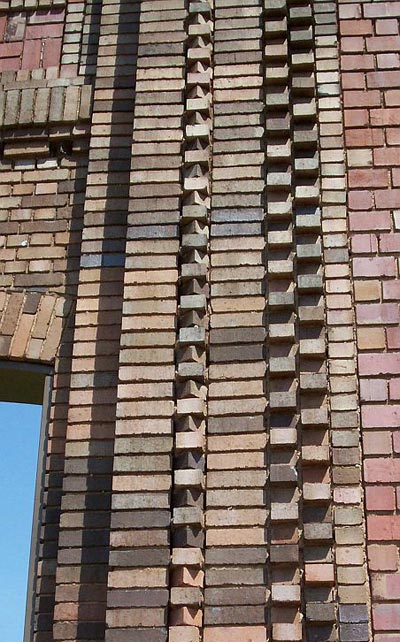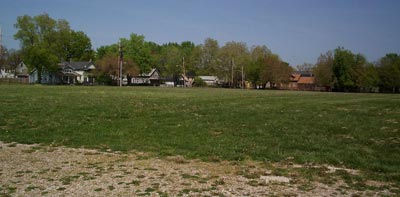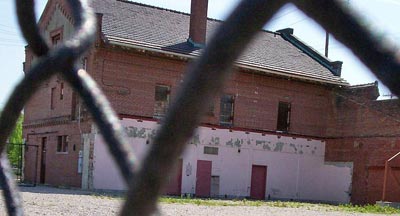In 1915, Cleveland changed its nickname for the final time. The team, still known as the Indians today, was named so for former Spider outfielder Luis Francis Sockalexis.
He was believed to be the first American Indian to play in the Major Leagues. The "Chief," as he was affectionately dubbed, impressed Cleveland fans for three seasons with his tremendous speed and a career-high batting average of .331 in 1897.
The club was purchased in 1916 by James Dunn, who promptly obtained Tris Speaker, the all-star Boston outfielder. In what is reputed to be the biggest deal of the time, Dunn parted with $55,000 and two players to put Speaker in the fold. Dunn also proclaimed that he would rename League Park "Dunn Field" when the Indians won the pennant. He wouldn't wait long.
Led by Speaker and a veritable crew of no-names, the Indians won the pennant in 1920. Amidst rumors of scandalous baseball pennant races (traced back to the White Sox being accused of "fixing" the 1919 World Series), the Indians desperately needed a World Series championship to restore the confidence of its fans -- not only in the team but in baseball.

The 1920 World Series opened in Brooklyn, New York. After three games, the Trolley Dodgers jumped out to a two-games-to-one advantage over the Indians. The scene then shifted to recently renamed Dunn Field. Cleveland won game four, evening the series and setting up two of the most famous World Series highlights in the game's history.
Cleveland loaded the bases on two hits and a walk to open their half of the first inning. With over 26,000 cheering him on, right fielder Elmer Smith connected on a one-two pitch and sent it high over the screen in right for a grand-slam home run -- the first ever in World Series competition.
Then came the fifth inning. As Dodger runners occupied first and second, Dodger relief pitcher Clarence Mitchell sent a vicious line drive toward right-center field. Up into the air leaped Cleveland second baseman Bill Wambsganns, who caught the liner, stepped on second to double off one runner, and then tagged the other Dodger who had drifted too far from first. An unassisted triple play! That feat has never been duplicated in World Series play.
Spurred on by these tremendous individual sequences, the Indians went on to sweep the Dodgers in the rest of the Series, and Cleveland had another championship.
The 1929 season was one most League Park (the name was changed back) aficionados would like to forget. Oh, there were some memorable games. Babe Ruth hit the 500th home run of his career over the right field wall.
But 1929 will be remembered as the year construction began on the Lakefront Municipal Stadium, full-time home of the ballclub from 1947 through 1994.
The Indians started to experiment with the Stadium in 1933, playing 77 games there. When the team's performance slipped and their statistics plummeted likewise, they moved back to League Park in an attempt to revive their anemic offense. But it was too late. League Park was on the endangered list.
In 1946 the innovative Bill Veeck bought the club for $1.6 million and, although he injected Cleveland with a baseball fever it had never experienced before (with promotions, free days, risky acquisitions), League Park was not in his plans. Veeck preferred the Stadium, which could hold three times as many people.
Maybe the situation was best summed up in a column written by former Cleveland Press scribe, Franklin Lewis, who, in December of 1948 penned, "Saturday, June 22, 1946 . . . warm, sunny . . . Lewis had just belted out Conn the second time . . . headlines in Cleveland screamed of new ownership of the Indians. Around League Park's lower stands limped a coatless pink-haired young giant. He looked like a fan, with his throat and forearms showing boldly.
He made his way, somewhat painfully up some steps, past rows of seats. A man said, 'Welcome to Cleveland, Mr. Veeck.'
'Call me Bill,' the young fellow admonished.
Cleveland baseball was born and League Park died on the spot."
Although the field was utilized by the Cleveland Buckeyes of the Negro League, the Cleveland Browns of the All-American Football Conference, and the Cleveland Rams of the National Football League, Major League baseball left League Park forever on September 21, 1946. The Detroit Tigers defeated the Indians 5-3 in the final game.
In years to come, the park would also host the four area colleges (Case Tech, Western Reserve, John Carroll, and Baldwin-Wallace) during football seasons.
In 1951, with the Indians firmly transplanted in Municipal Stadium, Veeck sold League Park to the City of Cleveland for $150,000. Soon, all but what is left today was demolished with the aim of converting the area into a massive playground facility featuring baseball and softball diamonds, basketball courts, gymnastic equipment, and more.

They even talked of re-erecting League Park's frame into a new park at a different location. But talk was as far as the plans went.
Today, you can see what is left of League Park. While visiting the site recently, I allowed my mind to wander some, and imagine that the sphere-like object I watched soar toward Lexington Avenue was blasted by Ruth, Gehrig, or Speaker. I could almost hear the crowd, rising in unison, sending up its roar.
 But then I am thrust back into present day. And I focus on the young boy. The one who hurled that rock toward Lexington. No ball. No home run. And you focus on the cold, deafening wind. No crowd.
But then I am thrust back into present day. And I focus on the young boy. The one who hurled that rock toward Lexington. No ball. No home run. And you focus on the cold, deafening wind. No crowd.
So you shake your head, and turn away...leaving the memories where they shall remain forever buried.
They tore down League Park, you know.
I just want to know why.